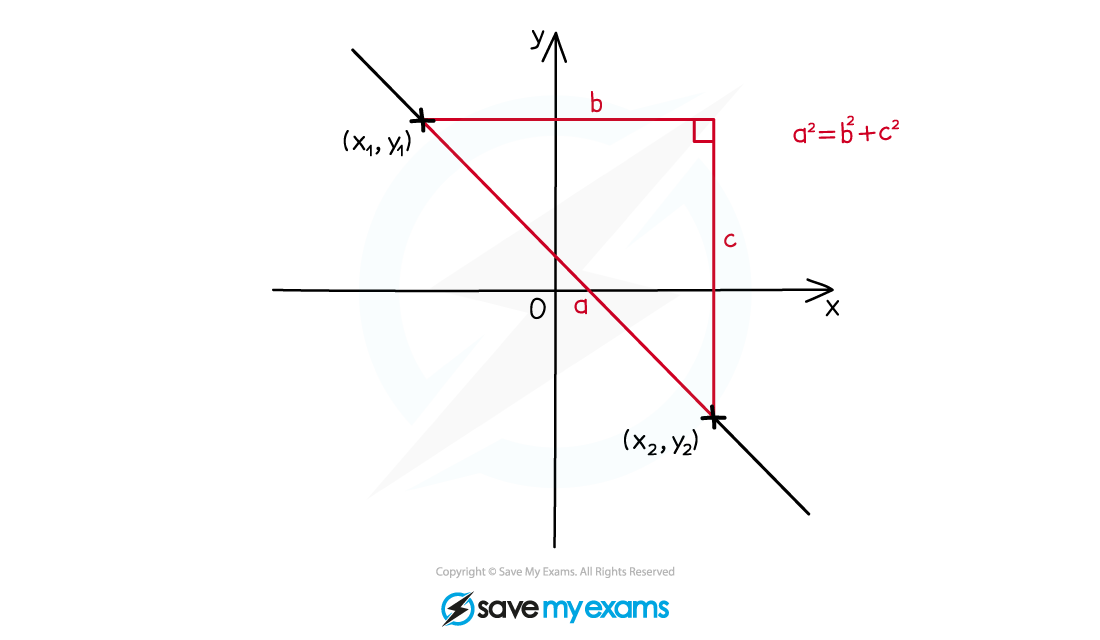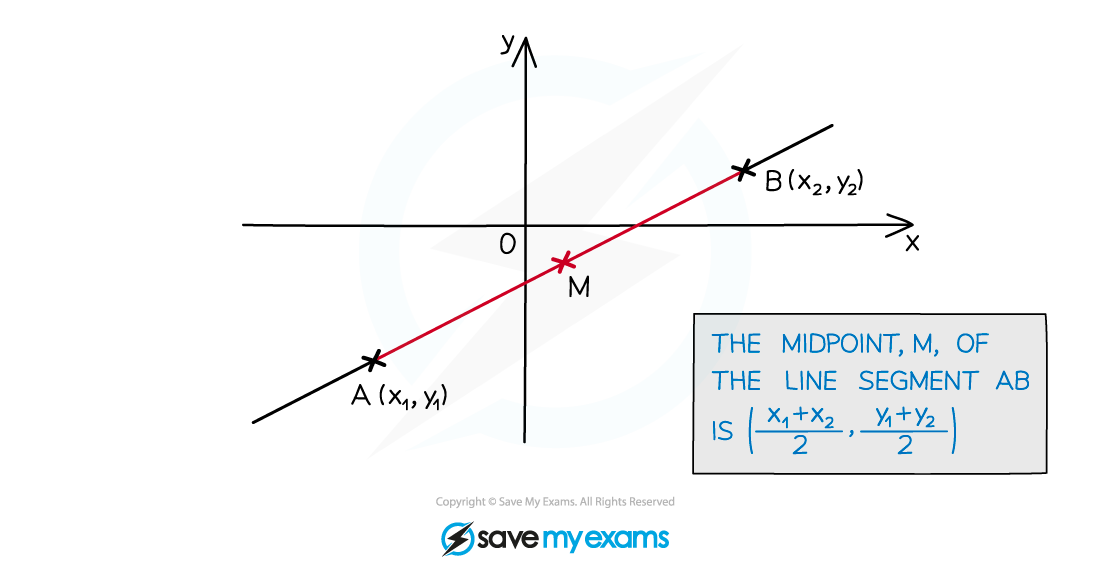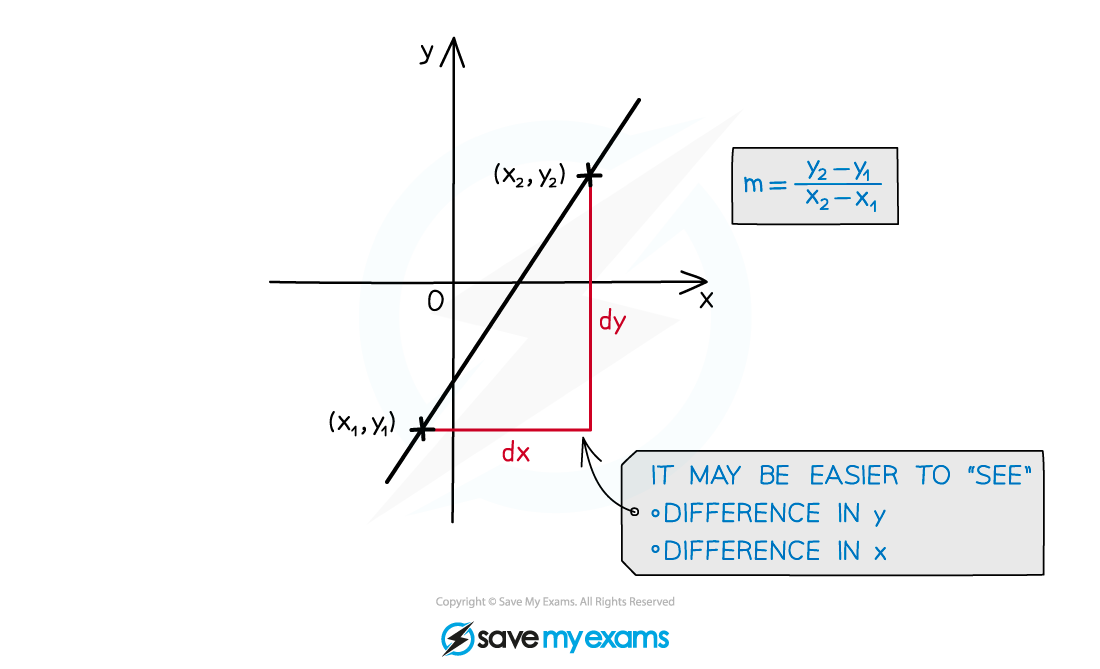Basic Coordinate Geometry (AQA A Level Maths): Revision Note
Exam code: 7357
Did this video help you?
Basic coordinate geometry
What is basic coordinate geometry?
Basic coordinate geometry refers to working with points, lines and shapes on the coordinate axis
Cartesian coordinates are simply the x -y coordinate system
Using coordinates you can
Calculate the distance between two points (length of a line)
Divide lines in m:n ratio,
Find the mid-point of a line
Calculate the area of a triangle (or other shapes)
Find missing coordinates using any of the above
Most of these involve working with straight line graphs
Straight line graphs are of the form y = mx + c
m is the gradient
c is the y-axis intercept
Part of a straight line is called a line segment

How do I find the length of a line segment?
By finding the distance, d, between two points (x1, y1) (x2, y2)
Pythagoras’ Theorem (a2 = b2 + c2) is used to find the length of a line



How do I find the midpoint of a line segment?

M is often used as the midpoint between two points (x1, y1) (x2, y2)
It is the average of both the x and y coordinates
Examiner Tips and Tricks
Work with the square of a distance for as long as possible as this avoids early rounding errors and surds.
Only square root when forced to or for a final answer, and use the ANS button (and other memory features) on your calculator.
How do I find the gradient of a line segment?
There are lots of ways to find the gradient, m, of a line segment
Use the two end points to find the change in y divided by change in x

Worked Example


Unlock more, it's free!
Did this page help you?